|
Creeping Buttercup (Ranunculus repens) is an aggressive introduced species that spreads by both runners and seed. At Leaning Oaks it is more or less confined to the cultivated portions of the garden (despite my efforts) and to the lawn and other disturbed areas. Fortunately, most of our meadow is too dry for Creeping Buttercup to do very well. Contact with the sap of this species can cause skin blisters, so weeding this out wearing gloves is a good idea. There is a cultivar with a yellow variegated leaf called "Buttered Popcorn" - however, it is just as invasive as the wild type and worth avoiding.
0 Comments
 I am going out on a limb here; there are two similar genera of syrphids and without a specimen I am not sure that I can say conclusively that this is a Melanostoma rather than a Platycheirus sp. There is only the one species of Melanostoma in this area. Syrphids are also known as Hover Flies or Flower Flies....and yes, you will often see them hovering over flowers! They are very important ecologically as pollinators and many are fabulous mimics of various Hymenopterans. I really like this on-line key (even though I still couldn't get it to genus[!]) for its use of photos and clickable couplets. http://www.biology.ualberta.ca/bsc/ejournal/mylmst_23/intro.html 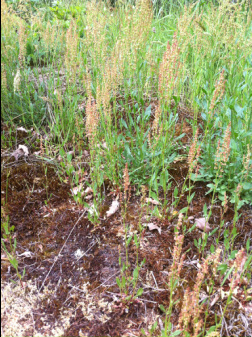 Sheep Sorrel (Rumex acetosella)is an introduced species with arrowhead shaped leaves that spreads by underground runners. The female flowers (there are separate male and female plants) are burgundy red and the plant is not unattractive when in bloom. It is a very adaptable species, and grows in a wide variety of habitats. Here it grows in cracks in the bedrock in our Garry Oak meadow. The leaves are edible, and lemony-tart and make a good addition to a salad, soup or as a component of a salad dressing. Note however that they are high in oxalic acid, which is toxic in large quantities, so use in moderation. Other common names include Red Sorrel, Common Sorrel and Field Sorrel. Baldhip Rose is the commonest wild rose on the property at Leaning Oaks. It is unusual for a rose in that is a shade tolerant species. Most roses retain the sepal crown on the bottom of the fruit (in the same way that an apple does), but this species drops this appendage and the small pear shaped fruit is smooth. The latin name, Rosa gymnocarpa refers to this; gymnocarpa means "naked fruit". The leaves can be used to make a rose tea.
Robert's Geranium (Geranium robertianum) is an introduced herbaceous weed. It is probably best known for its bright pink flowers and distinctly unpleasant smell if the foliage is crushed or bruised (earning it another common name, "Stinky Bob"). It is rumoured to be edible and has been used for a variety of medicinal uses, although at least one website cautions that there has been very little testing of side effects. It is one of the few non-native plants which can invade shady forests and I have seen it moving into some of the older forests on southern Vancouver Island.
Geranium is greek for "little crane's bill", in reference to the shape of the fruit. 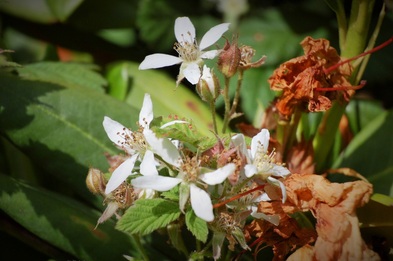 Trailing Blackberry is both beloved and cursed, depending on where an individual plant grows and the nature of your interaction with it. The fruit is wonderful, and this species has been used in breeding programs to produced very flavourful blackberries. In addition, it is one of the parents of the hybrid loganberry, marionberry and boysenberry. The foliage is also very flavourful and is a very good leaf to steep to make blackberry tea. On the other hand, it can be a rapidly growing weed in the garden, fully capable of creeping along the ground or scrambling over shrubs and perennials for several meters in a single growing season. Branch tips often root, and a neglected vine quickly can turn into a big job. The stems are thorny, so pulling without gloves usually gets you a hand full of thorns. Summer strolls in flip-flops or sandals is an excellent way to find this plant, and it becomes painfully obvious why one alternative name is "ankle saw". Rubus ursinus ssp. macropetalus is dioecious, that is males and females are on separate plants. Pity that most of the plants here at Leaning Oaks are male, and therefore don't produce fruit. Alternate common names are Pacific Blackberry, Dewberry, Douglas Berry and California Blackberry. I have several other names for it, best not repeated here. 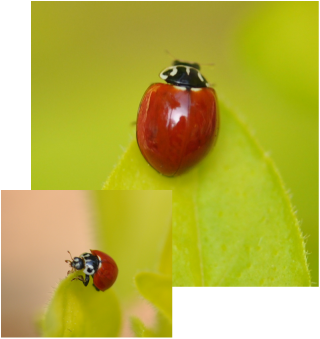 Spotless and shiny with a funky pattern on the pronotum that makes up for any lack of spots, Cycloneda polita is found through southern BC and west to the east slope of the Rockies. The term ladybird originated in the Middle Ages. They were called "beetle of our Lady", referring to Mary (the virgin) as she was just about always dressed in red in religious paintings. The other origin of the name comes from the Catholic farmers praying to Mary for help with crops and when the beetles arrived and did help by chowing down on the aphids and other crop pests, the farmers referred to them as "our lady's beetle". (from "All things Catholic" and "English Stack Exchange" 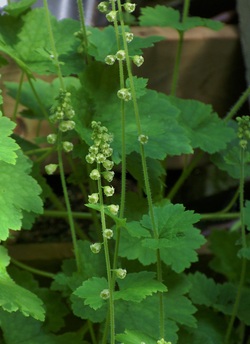 Fringecup is one of my favourite native plants. The lush basal rosette and strange recurved, filigree petals are subtle, unusual and elegant. It is, however, the perfume that these flowers produce that makes Tellima grandiflora so rewarding. This perfume brings back strong memories of my days as a park naturalist. The hill behind the visitor centre at Goldstream Provincial Park was covered in Fringecup and its perfume was a fixture during the busy days of spring school programs. Fringcup is a member of the saxifrage family and it is the only species in the genus. This makes the latin name (which means large flowered Tellima) sort of silly, since there is only one kind of Tellima. 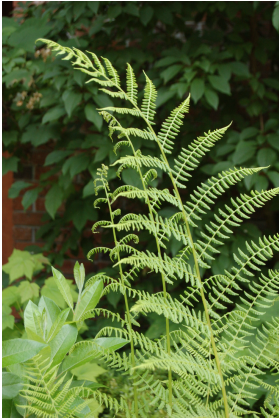 Lady Fern (Athyrium filix-femina ssp. cyclosorum) is a large feathery fern at Leaning Oaks, second in size only to the Western Sword Fern. Unlike that species, which is evergreen, Lady Fern fronds go dormant in the fall and disappear for the winter months. It is a very attractive plant, and widely used in gardens. It grows best in shady sites that are slightly moist and shaded. 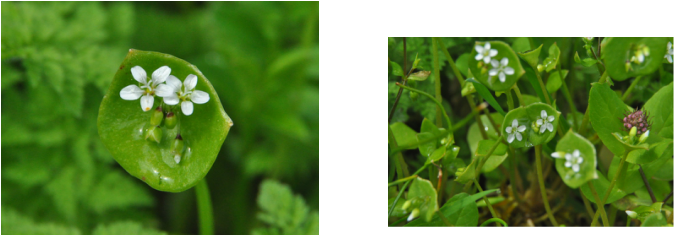 It is the two opposite leaves that are joined together forming a shallow cup that make this plant distinct. Other than that it can be quite variable depending on the moisture and soil conditions. Claytonia perfoliata ssp. perfoliata is edible and makes a bright addition to salads or anywhere that greens are desired. It is very exciting to hear the first rustle of the leaves and dry grasses in the spring as the snakes emerge and the little ones head out to explore the world. The gartersnake that we see most frequently at Leaning Oaks is the northwestern or Thamnophis ordinoides. They are very variable in colour from the ones seen above to a drab plain brown. They feed on slugs and earthworms -a happy thing for the garden! The females can be nearly a meter in total length. The small, blunt nosed head that is not very distinct from the rest of the body help to distinguish this species from the other two gartersnakes that are found on Vancouver Island- and B.C.. They are also the most terrestrial of the three species.
We had an amazing experience one afternoon as we watched a Great Horned Owl slowly, slowly stalk an adult northwestern garternake, grab it and then start at the head and feed it slowly lengthwise down it's bill - all while the owl stood on a bench below our vantage point from an upper window.  House Wrens (Troglodytes aedon) are spring and summer birds for us at Leaning Oaks. Our earliest record is from the first week of April and the latest is the third week of August. We have records from almost every year we have been on the property, however some years it is just a bird or two briefly stopping in during spring migration. Some years however, we have birds that breed on the property, using one of our nest boxes. They aren't easily overlooked early in the breeding season as they are very vocal with wheezy, chattering, complicated songs that are produced many, many times a day. They are not only industrious singers but ambitious nest constructors as well, with many long sticks and pieces of grass stuffed into the nest boxes, nearly filling them.  I found this elongated spotted beetle crawling deep through the moss in the middle of April, so probably one of the earlier ones. We found a key online, http://www.discoverlife.org/20/q?guide=Ladybug that was pretty easy to use and (hopefully) accurate. Lady beetles have a larval stage where they look like a teeny tiny spiky alligators. Both the adults and the larvae are voracious feeders --particularly on aphids. The scientific name of the 13 spot is a mouthful, Hippodamia tredecimpunctata. 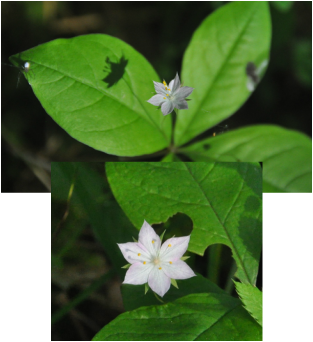 A little way from the meadow, in dappled shade and often near the base of a Douglas-fir, Trientalis borealis ssp. latifolia sports a starry flower on a oh so slender stalk--the flower appearing to float above the broad leaves. Indian Potato, another English name refers to the small, elongate pink tubers that were gathered for food by the First Nations. They are apparently a good source of starch. I am going to have to remember to go out and photograph the seed capsule - the description is that it looks like a little tiny soccer ball. Barred Owls (Strix varia) are new arrivals to Vancouver Island, with the first record on the island in 1969. Since then it has become a common owl, in a wide variety of habitats. Barred Owl increases seem to be correlated with the decline in Western Screech-Owls, which have gone from being the most abundant raptor on Vancouver Island and the Gulf Islands, to one of the rarest.
As I write it is just starting to get dark, and I can hear alarm calls from American Robins, Black-headed Grosbeaks, Spotted Towhees and Dark-eyed Juncos - the Barred Owl we photographed for this blog two nights ago is likely back in the yard. This is by far the most common butterfly seen on Leaning Oaks early in the spring. It has two generations per year, the first being the most abundant. Celastrina echo can be seen nectaring on most of the meadow spring flowers, and often perches on grasses. It is found through the southern fifth of B.C. so it is likely that it is quite cosmopolitan in it's choice of food plants.
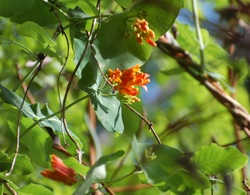 Orange Honeysuckle (Lonicera ciliosa) is one of two species of Lonicera that we have at Leaning Oaks. It is the earlier blooming of the two. Unlike moth pollinated honeysuckles, our native honeysuckle vines are pollinated by hummingbirds, and their showy flowers and large nectaries (but no perfume) are typical of hummingbird pollinated flowers. It is one of the few native vines in our area, and can climb up into the canopy of small trees. Here they grow up Garry Oaks and small Douglas-fir trees. One of the emblematic wildflowers in the Garry Oak meadow is Camassia quamash. The blue swaths begin sometime near the end of April and are usually finished by the May long weekend. The bulbs were a very important traditional food . Carbohydrates were in short supply and the bulbs were a coveted source. Fields of camas were passed on between families, the death camas "weeded" out and the ground cleared of rocks, sticks and other debris to provide the best growing conditions. The bulbs have to be cooked for long periods of time to break down the long chained inulin into something that can be digested.
It is interesting that this quote from Lewis (of Lewis and Clarke) was mid June; long after our camas have dropped all of their "blumes".
 For us, American Goldfinch is a bird of spring and summer. Our first birds of the year usually arrive in the third week of April and are gone by the end of September. This is in spite of the fact that small numbers winter on Vancouver Island and the Leaning Oaks avian welfare system ensures a year round supply of sunflower seeds. They are among the dozen or so species that like to bath in the gravel filtration beds that we have set up to remove nutrients from the pond and keep the water clear and free of algae. 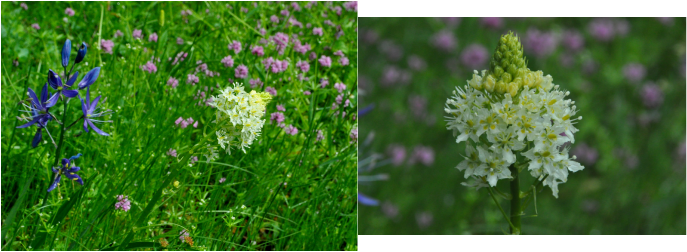 I have this image of a game of Russian Roulette where there are people out harvesting the rich bulbs of the edible blue camas and never quite knowing when they may accidentally dig up the the similar Toxicoscordion venenosum bulb that grows in the same locations, but contains the alkaloid zygacine. To avoid this, local indigenous people would remove the plants from a local harvest area when they were in bloom and more recognizable. This would make harvesting less risky! The leaves are also poisonous and have been deadly to grazing cattle in the spring where the death-camas is out before other forage is available. We have a few locations where the creamy death-camas is a lovely counterpoint to the abundant blue camas; generally in slightly moister areas. |
AuthorsTwo biologists on a beautiful property armed with cameras, smart phones and a marginal knowledge of websites took up the challenge of documenting one species a day on that property. Join along! Posts and photographs by Leah Ramsay and David Fraser (unless otherwise stated); started January 1, 2014. Categories
All
Archives
May 2025
|
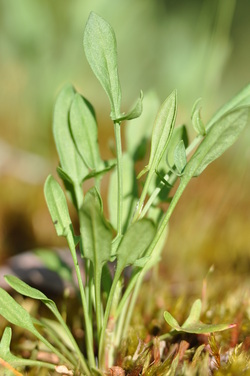
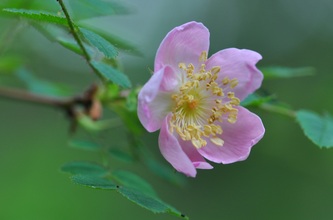

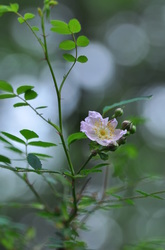
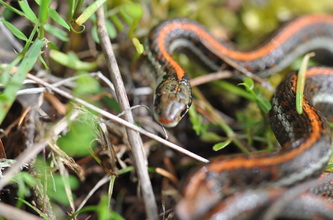
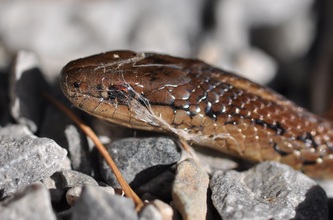
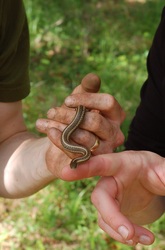
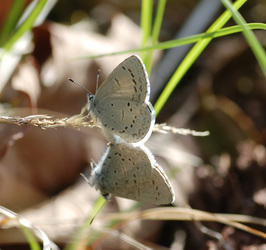


 RSS Feed
RSS Feed